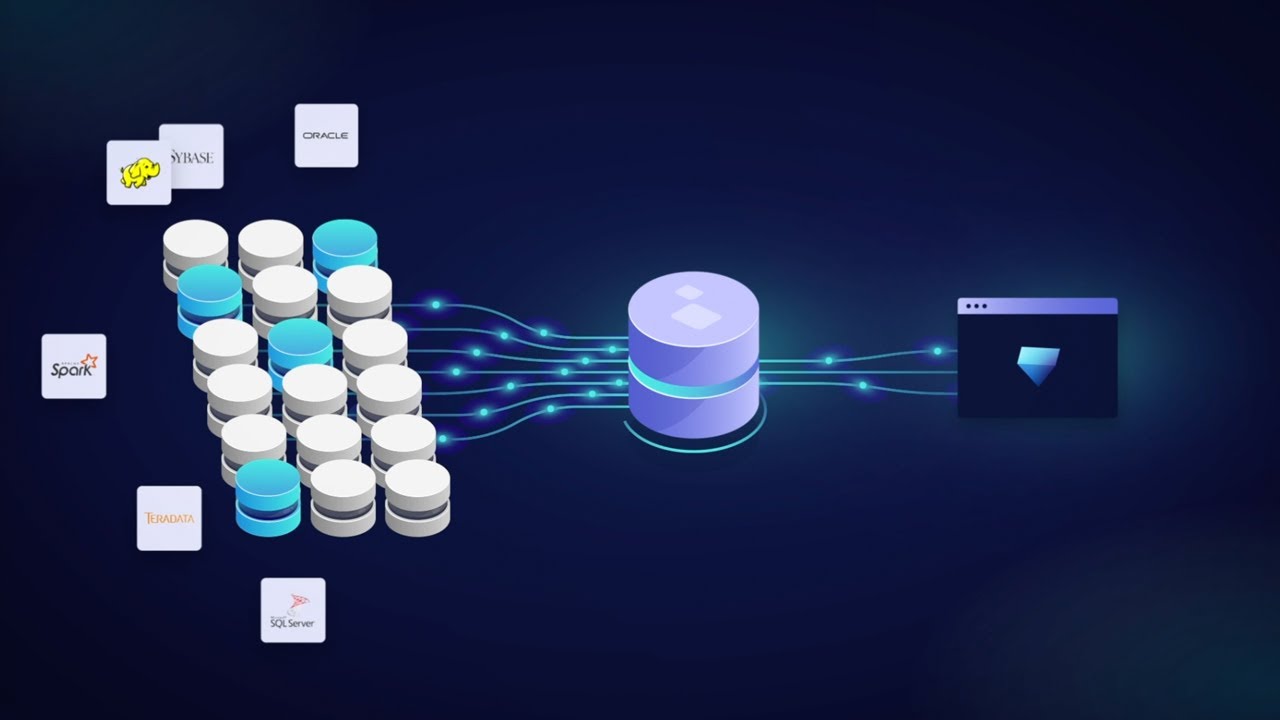A Real-Time Supply Chain for Digital Business
How SAP Solutions for Supply Chain Planning and Execution Use Live Data to Enable Real-Time Insight and Responsiveness
Delivering the right product to the right customer at the right time and cost is the age-old goal of any supply chain organization. While this has always required a delicate balance between demand planning, response, and execution, today’s supply chain managers and executives must also factor in evolving customer expectations for speed and personalization, driven by changes in the consumer market, and master the latest technology trends, such as the Internet of Things (IoT), big data, machine learning, real-time data signals, and cloud networks.
These factors affect not only the execution side, where there is a growing customer expectation for next-day delivery of personalized products, but also the planning side. Demand forecasts need to predict and prepare the business for what will happen tomorrow — not just next year or next month — enabling both demand-driven business planning and response management processes.
To meet these needs, modern supply chains require an integrated network of stakeholders with a granular view into data based on “live” conditions. By incorporating live data into a tightly integrated digital supply chain network, organizations can fundamentally change supply chain execution, planning, and decision support — and enable faster cycle times, automation, more granular planning, increased agility across networks, and a dynamic realignment of supply to meet demand at the lowest cost possible.
This article looks at how SAP supports the digital supply chain in today’s organizations with solutions that go beyond traditional approaches to planning and execution, enabling real-time insight and responsiveness.
The Need for a New Approach to Supply Chain Planning and Execution
Traditional tools still deployed in many organizations are simply not built for supply chain planning and execution in the digital age. Often business processes are built around sequential planning steps and batch-based processes that negate the benefits of the tools themselves.
Old-school decision support entailed a slow process of moving data from a transactional or planning system into a data warehouse, applying some analytics to it, and then pushing it out — usually in a spreadsheet — to a disparate group of decision makers. Review cycles between operations and finance take weeks, and reports are out of date even before the planning processes begin.
Most organizations have worked hard to get where they are today using the technologies that have been available over the last 10 to 20 years. The challenge is how to take advantage of new technologies and move to a live, digital-driven supply chain, remove latency, improve collaboration with networks, and better integrate planning and execution.
To help customers with this challenge, SAP offers a new digital supply chain planning and execution platform, based on state-of-the-art technology, that customers can easily adopt in just a few months, complementing what they already have in place and offering a path to a next-generation digital supply chain platform.
SAP Solutions for Enabling the Digital Supply Chain
Let’s take a closer look at SAP’s offerings in the key areas of supply chain execution and planning, and how they help enable businesses to proactively handle real-time changes and deliver the products customers want, when and where they want them.
Demand-Driven Planning and Response Management
SAP Integrated Business Planning — a cloud-based solution that runs on SAP HANA — brings supply chain, finance, demand, and supply data together onto one platform. Natively developed on SAP HANA, it brings the speed of memory-resident processing to all aspects of the supply chain for immediate planning, simulation, and decision support. SAP Integrated Business Planning allows companies to manage global, regional, and local supply chains, integrating all time horizons through demand-driven business planning and response management.
With SAP Integrated Business Planning, planning and simulation can run in real time. Forecasts can be made for both the long term and short term using market and customer analysis based on live conditions, even with daily pattern recognition and demand sensing. Digital planning strategies can, in turn, become much more granular and segmented, best aligning demand with supply at the lowest cost and best service, even to the concept of a “segment of one,” for example. Companies can plan and replan with an increased degree of agility in terms of where to invest to deliver differentiated services, such as holding inventory locally versus regionally, allocating capacity or inventory, or shortening delivery lead times.
SAP Integrated Business Planning also enables organizations to implement response management strategies that allow them to react in real time to changing market conditions. In the world of omnichannel demand, defining customer and order priority becomes an important driver for allocating supply capacity and inventory. Across tactical and operational time horizons, SAP Integrated Business Planning supports both allocation simulation and planning as well as detailed rescheduling to manage short-term volatility and change.
Many companies are looking to be more demand driven, with concepts developed in the automotive industry being adopted in most other distribution-intensive sectors. Demand-driven material requirements planning (MRP) is one such example that is supported by SAP Integrated Business Planning. Only actual demand is used to calculate replenishment at strategically placed inventory buffers, and buffer risk level is used to assign priorities for resupply. This pull-based model seeks to eliminate the effects of forecast error, and lead times as well as inventory levels are adapted on an ongoing basis to manage volatility.
Supply Chain Execution and Logistics
SAP Transportation Management, SAP Extended Warehouse Management, and SAP solutions for track and trace are also deployable on the SAP HANA platform with shared data, enabling tight, end-to-end integration between planning and execution based on one version of the supply chain. SAP’s supply chain execution suite is designed to increase the speed of order fulfillment and run a cost-efficient and tightly integrated logistics process. It balances both in-house and outsourced operations to meet the varying needs of today’s networked organizations with the agility to meet unknown future changes.
The close integration between planning and execution allows for process control to be tied directly to the live environment, which helps to reduce error picks, shore up returns, optimize warehouse resources based on real-time orders, and provide better process control and orchestration while speeding up operations. The logistics process optimizes the flow of goods through the physical network, covering a seamless and streamlined operation of shipments across all modes of transportation, handling yard logistics as well as coordinating cross-dock locations and transit warehouses.
New Data and Decision Support Technologies
New data and decision support technologies — including big data, IoT, and advanced algorithms such as machine learning — are reshaping business, and SAP is incorporating these technologies into the SAP HANA platform, making them easy for SAP customers to adopt into their supply chains. For example, SAP Integrated Business Planning includes machine learning and intelligent algorithms that help supply chain organizations automate planning and decisions with a higher degree of intelligence based on big data, as well as streamline exception management across the network to improve planner productivity and effectiveness.
In addition, the digital innovation portfolio SAP Leonardo includes a platform to connect IoT technologies so that supply chains can take data feeds from sensors and connect this into business processes such as demand sensing or logistics, or product maintenance and after-market support.
On the planning and demand-sensing side, SAP Connected Goods — a solution within SAP Leonardo — enables a live view of what happens when a product is purchased. By collecting IoT data in SAP Connected Goods and harmonizing it with point-of-sale data in SAP Demand Signal Management, an organization can, for example, know if a product is out of stock at a retail location without waiting for replenishment signals. Businesses can also make correlations to understand why a certain product is or is not selling in accordance with demand plans. For example, a soft drink distributor can put a sensor on a cooler in a convenience store and perform variance analysis to determine if the drinks are too warm, or if the cooler door is often open longer than necessary.
On the execution and operations side, SAP Global Track and Trace — a cloud-based solution included with SAP Leonardo — enables real-time tracking of orders, containers, pallets, and shipments. A sensor on a container can provide location information and detect temperature, light refraction, and vibration, for example, enabling real-time adjustments to ensure optimal conditions through a container’s journey. SAP Vehicle Insights is another solution within SAP Leonardo that leverages vehicle sensor data to manage entire connected fleets and provide stakeholders with business context around real-time signals regarding geolocation, telemetry information, and other conditions. These signals can be used to drive efficiencies such as establishing more direct routes to save on fuel, reducing emissions, and shortening delivery times.1
These examples show how leveraging SAP Leonardo as an innovation platform, combined with additional enabling technologies, such as machine learning and IoT-connected devices, contribute to creating a live, digital supply chain that enables organizations to plan and react, in real time, to conditions on the ground.
A Real-Time Supply Chain for the Real World
In the past, supply chain planning was an abstract exercise; supply chain professionals had to build complex models that attempted to replicate what was happening in the real world, but often data was aggregated and immediately outdated by batch cycles.
Today, by leveraging innovative, easy-to-adopt supply chain planning and execution technologies, these same professionals are making decisions based on live data in real time. If the data shows that demand is changing, a fully digitized supply chain with built-in machine learning capabilities can respond with a high degree of automation and speed. Using more data means better decisions, reducing cost to serve, and using live data means cycle times can drop from months and weeks to days and hours, allowing for more agility.
1 The use of IoT-connected devices on the shop floor can accelerate the transition to responsive, local manufacturing to meet the demands for customization and immediacy, and can help bring manufacturing closer to the customer. [back]





